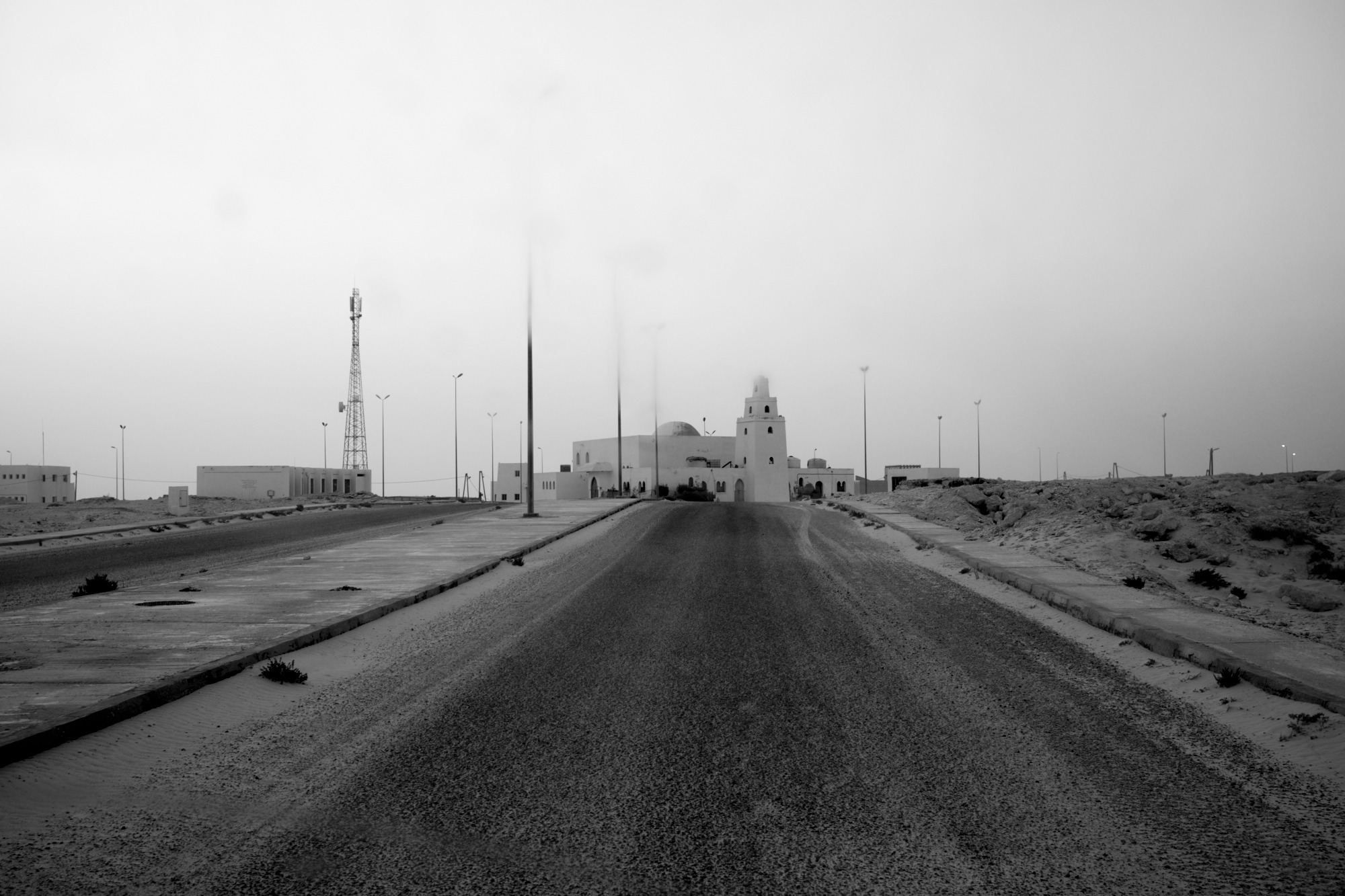
Towards the shifting sands
Starting in Morocco, the National 1 traverses the disputed territory of the Western Sahara to join Mauritania. The arid landscape that it crosses bears few markers of human activity. Elements shaped, eroded, bent or battered by the Harmattan sand storms overshadow man-made structures. Photographer Jérémie Vaudaux takes us along that route, capturing the nature of an apparently still and yet ever-mutating landscape.
I had a question deep-rooted in my mind: where does the desert start? It turned into an obsession as we travelled the southern part of Morocco, after we crossed Agadir. I physically felt that we were entering Sahara at Tan-Tan. It had something to do with the sky and the rocks, how they melted into an undefined backdrop, that made me feel that I was there. In more practical terms, we were entering a land of freedom. My eyes were able to see the nothingness in the distance; human presence was scarce compared to the northern part of Morocco – the useful part of Morocco, as it is sometimes described.
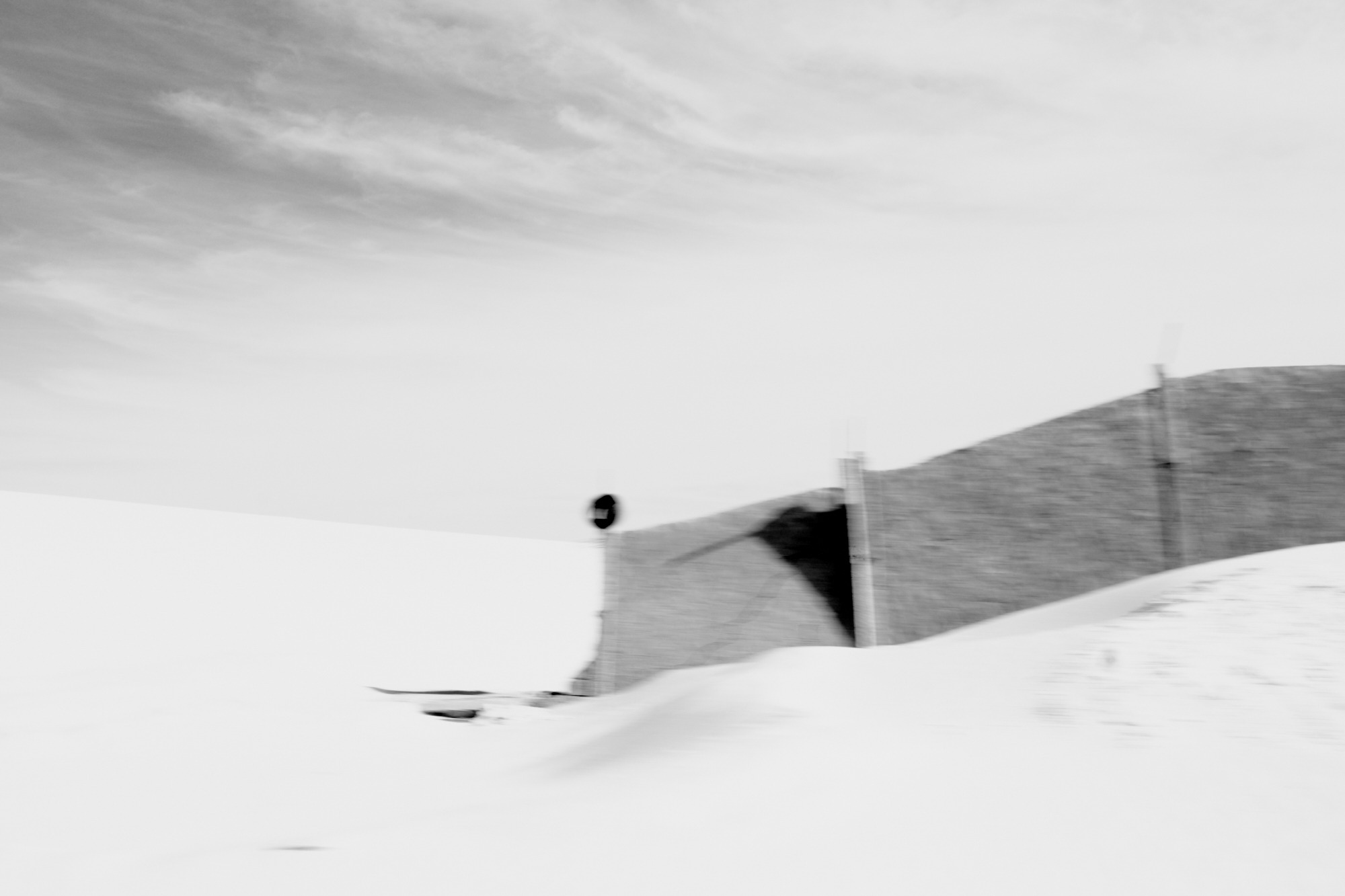
This journey to the Sahara, so to speak, was not a first attempt: it was a return, even if it was the first time I drove there. I decided to come back to Mauritania after I left the country in April 2019. I had a strong feeling that there was an unfinished story there: I had to come back to this land of nothingness somehow to turn the page and move on. In a way, it is like I never left Mauritania. Going back there was a spiritual quest of relief and healing.
I started the journey from Paris, France, at the beginning of Autumn 2019 with my girlfriend as a co-driver. We were driving an old 1985 Ford Transit camper. It took us 15 days and close to 2000 km to reach Nouakchott from Tan-Tan. We crossed 9 towns and villages and we slept 14 nights in the area which my images depict, including 8 nights in Dakhla, where we took a break near the ocean and explored by car the town and its surroundings.
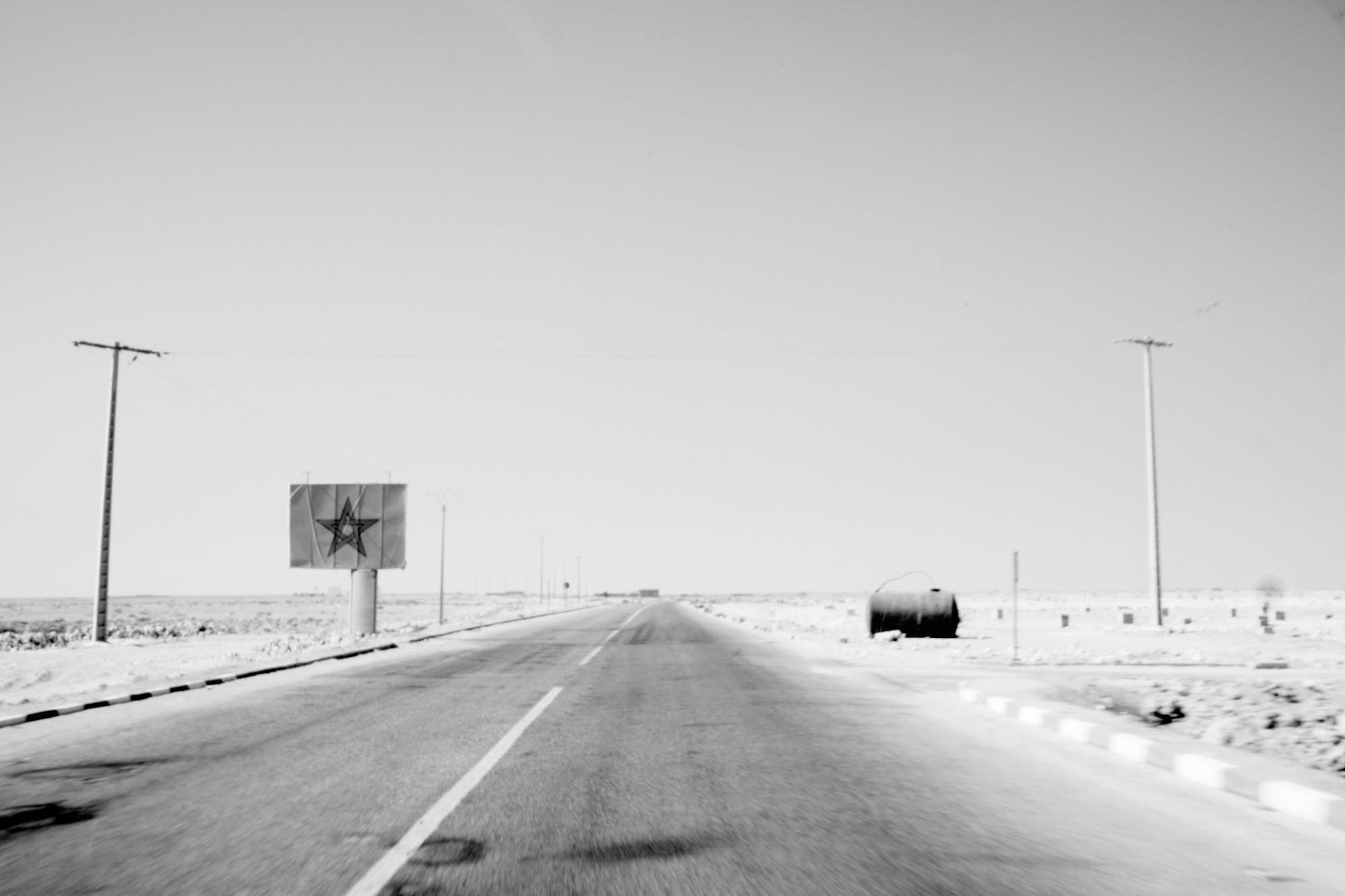
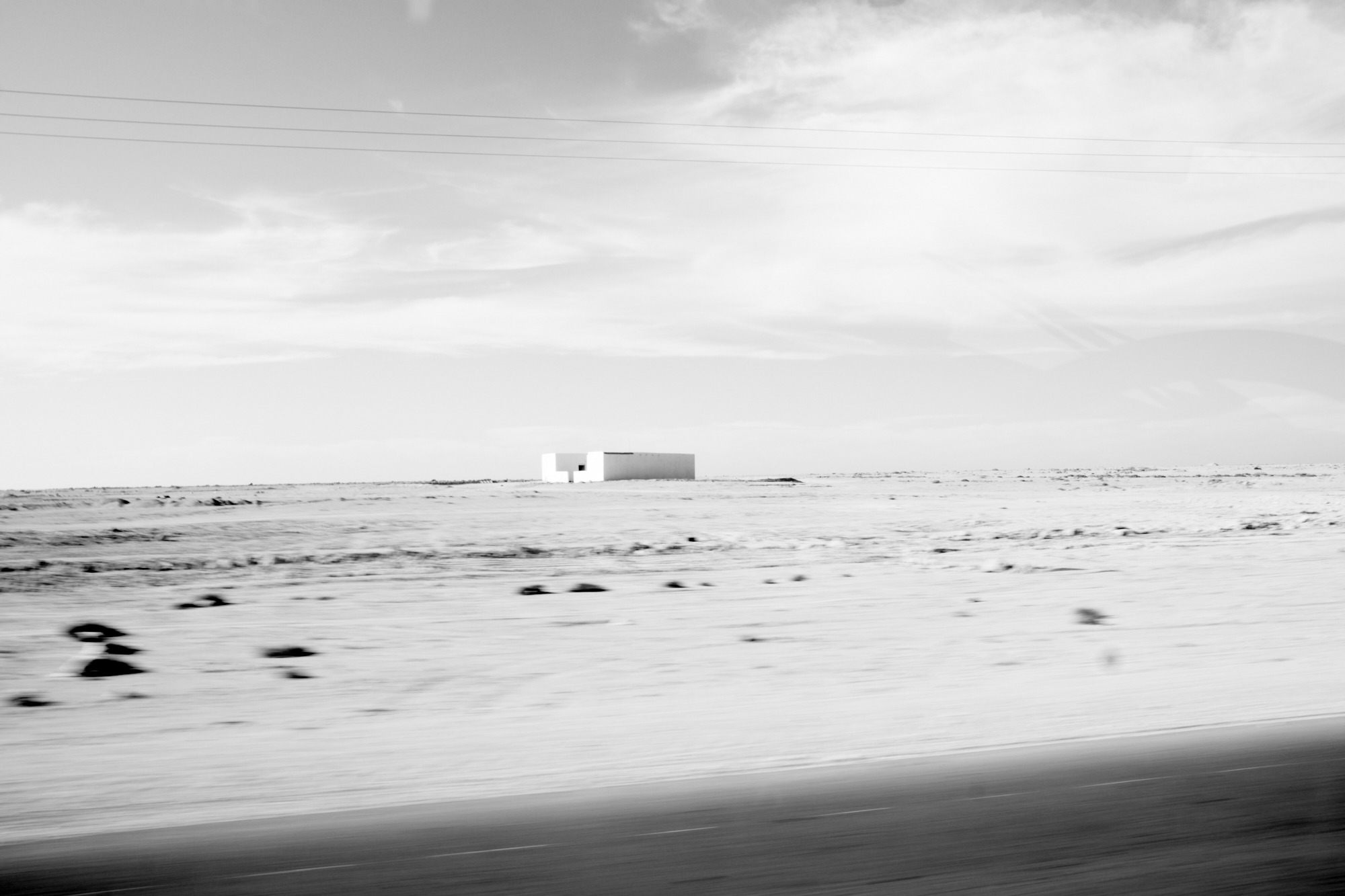
To a foreigner, the Sahara can be indistinct, meaning that it can be hard to see changes in the landscape. You could tell that, yes here there are more trees, or more rocks; here, the dunes are higher or the sand is whiter than it used to be… However, the desert is characterised by its arid landscape with low human and urban density. No border changes anything: the landscapes feels the same in Western Sahara as well as in Mauritania. In fact, there’s no way to tell the difference between the two countries when you ride the axis that traverses them.
I had no choice but to take that road. The Nationale 1 in Morocco and the occupied territories of Western Sahara and the Nationale 2 in Mauritania is the one and only paved road across the western part of Sahara. All along the way, from Tan-Tan to the border with Mauritania in Guerguerat, the road was perfectly maintained. No sand on the tarmac, no bump, no hole, not like the Northern part of Morocco, neither Mauritania.

In fact, the road, financed by the Kingdom of Morocco, is a part of their colonisation policy: the infrastructure is brand new, no older than 10 years. The governments encourage investment in the region so they have to make the area bankable. Morocco also subsidises the fuel in the disputed territory of the Western Sahara, which costs 0.80€ per litre vs 1.1€ per litre in the northern part of Morocco.
The landscape changes round in a circle: rocky and flat areas (reg), then small dunes, then reg again… and so on for 2000 km. Most of the time, you cannot see the Atlantic Ocean as you are inland by dozens of kilometres but every now and then you can see the shoreline, for instance, between Akhfennir and Tarfaya. Sometimes, more so when you are high (on hash), it’s like you’re hovering. The area can be depressing if you are apeirophobic (afraid of the infinity) as there are very few landmarks apart from the scarce signs of human presence – towns, windmills and solar panels. I personally found it strongly energising.

Stolen cars, and cars whose owner tried to enter Morocco without paying customs duties, lie abandoned on the sand. There are no vehicle registration plates on the cars: these vehicles will disappear into the no-man’s land between Morocco and Mauritania.
Towns are located close to natural resources, whether they be water wells, natural gas, fish or gold. All these towns are located on the Nationale 1 axis along the coastline, which creates a huge contrast between the inland which is losing inhabitants and the coastline that gains new people. Mauritanian urbanisation really is even more unbalanced as 1 quarter of the 4,000,000 citizens live in the capital city Nouakchott – almost 500 km south from the Moroccan border and there is only one town, Chami, roughly in the middle, which didn’t exist 20 years ago. Today, Chami hosts the biggest gold mine of Mauritania. Natural resources are being exploited. Solar panel fields, windmill corridors, fishing harbours, goldmines… Economically speaking, they are the only sources of income visible on the land. There is no agriculture since almost everything is imported from the North of Morocco and Senegal, and apart from in Nouakchott, there is very little industry.
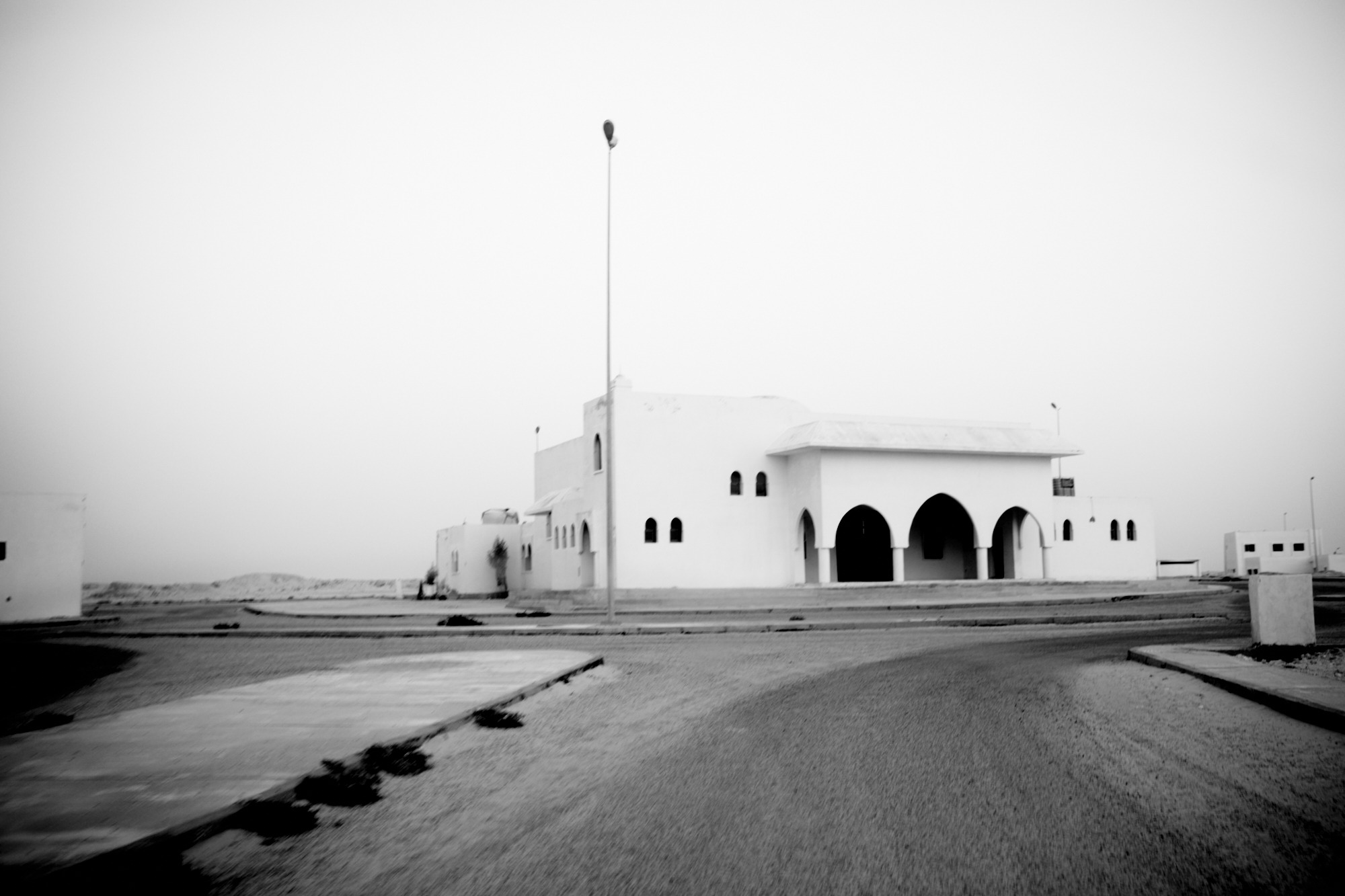
Towns convey the feeling of raw human organisation, since the state and the authorities cannot control their development. What is striking is that these towns, which I call “villes-verrues” are growing organically along the main road that crosses the town. I call them this because they break the harmony of the landscape, creating a sharp contrast with the homogeny of the desert, and, most of the time, they are ugly. No urban planning, no water nor electricity.
People move to the towns for social and economic benefits. Before the border partition of the Sahara that happened gradually over the 19th and 20th century, the area was a vast nomadic land where the Saharan tribes would move their camel herds in search of pastures and water. Now, people move from the badya (bush) to the town, from nomadic camps to concrete houses.
It’s a societal revolution: nomadism is being abandoned by the Saharaouis and Mauritanians in favour of a settled life. Before 20th and 21st century towns, there were no town in the area, or very few. Chinguetti, in Mauritania was known as a caravan stop on the road to Mecca. In 1978, 75% of Mauritanians were nomads, whereas in 2001, they only represented 6% of the population. Today, it is probably not more than 2 or 3 percent.

The result, however, is messy. Visually you cannot really tell where downtown is, whereas the pattern of the streets keeps repeating: concrete bungalows, small food shops, gas stations, mosques, mechanics shops … and so on. It’s boring. No diversity, no identity – every city looks the same. Only Nouakchott has more identities in different parts of the town.
Yet, in the Sahara I was a stranger. I was just passing by, like a ghost pushed by the wind. I was not there to last but I wanted to remember that feeling, I wanted to remember that I was moving – or maybe that the landscape was moving as well.
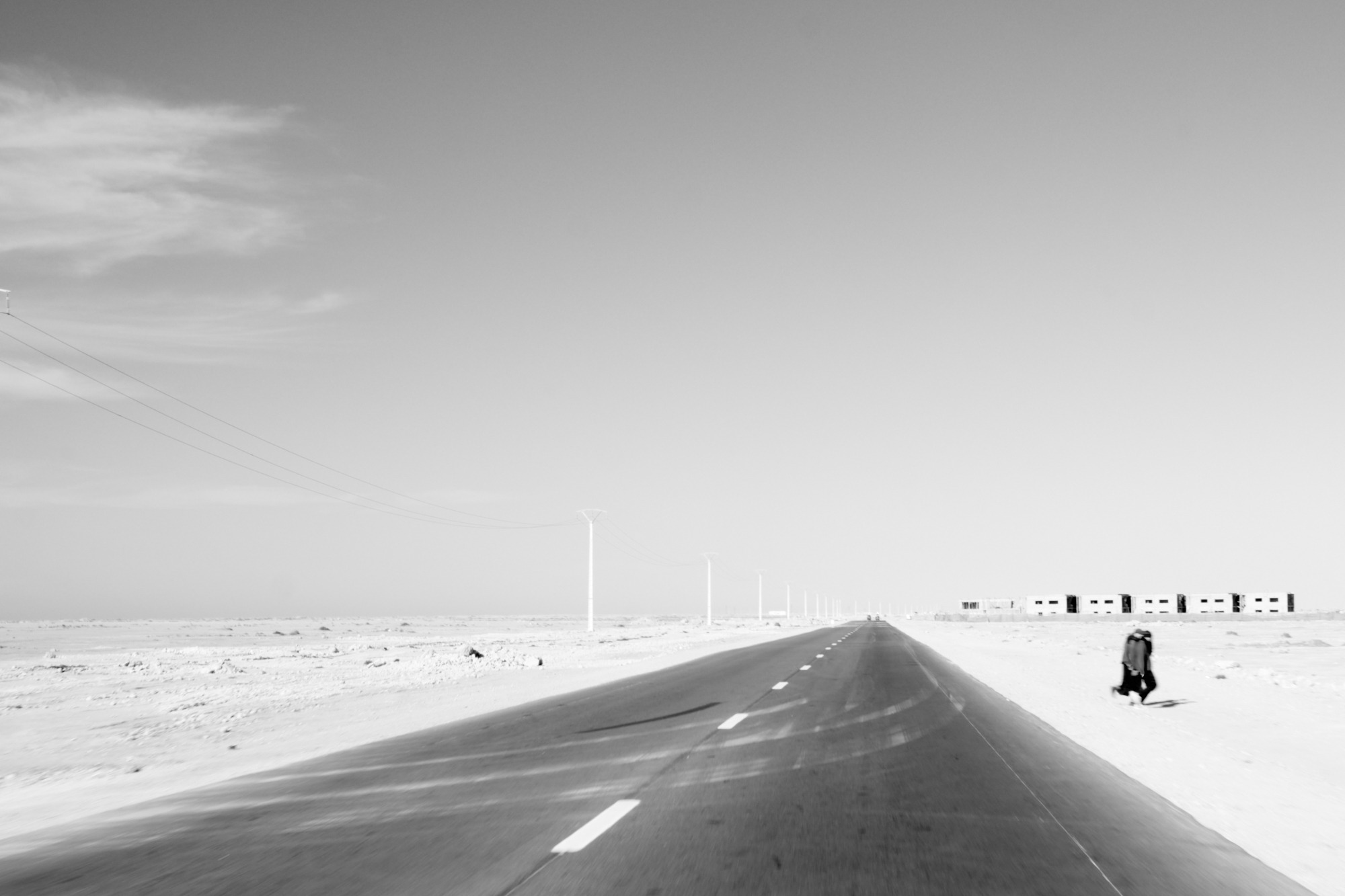
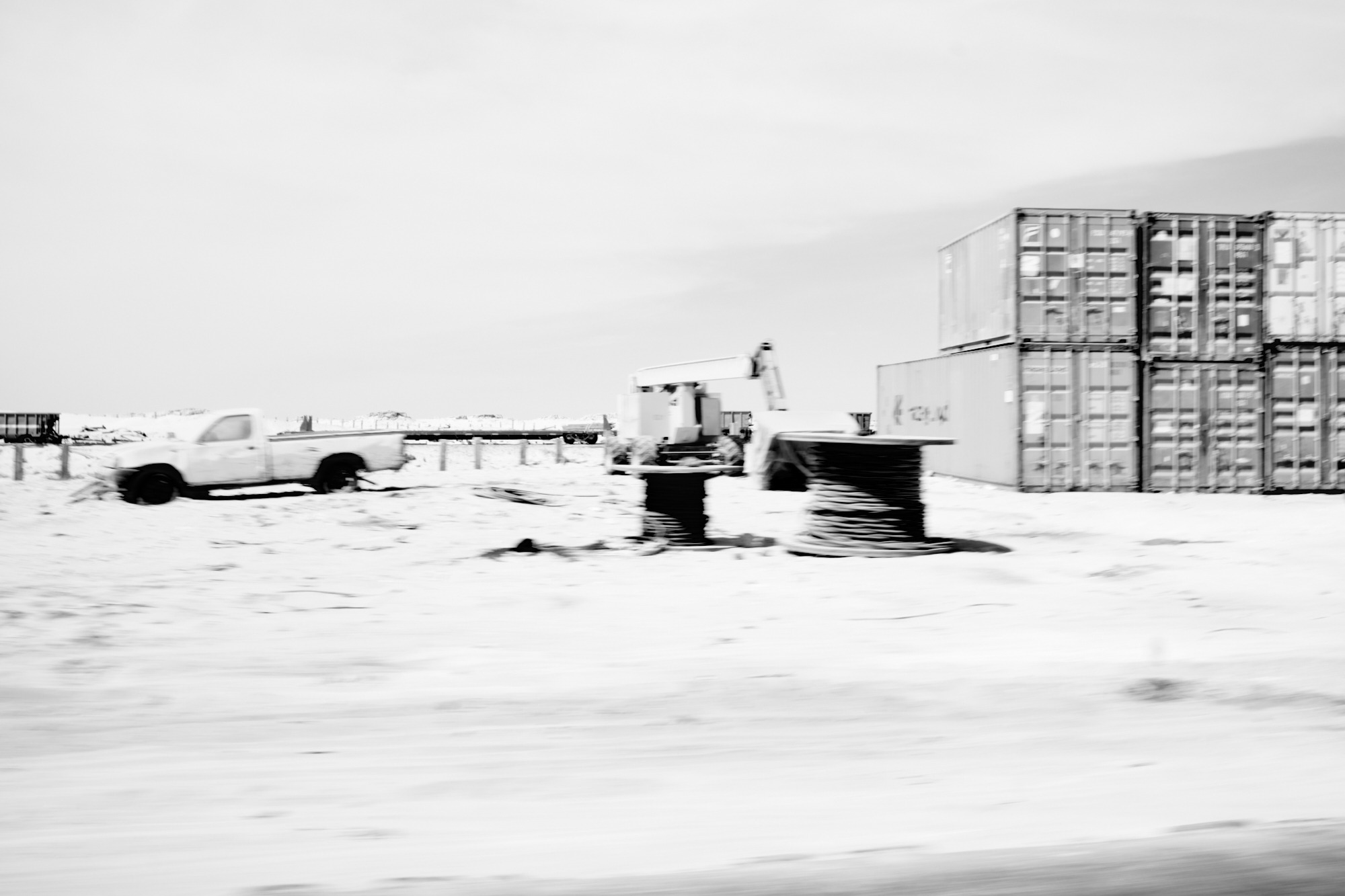
This is the area of the Harmattan – a wind that blows from meridional Sahara to the west coast. It is hot and extremely dry and sometimes carries dust, creating dust-storms between November and the end of March. As a driver, I’ve been lucky. When we drove through the desert area, the Harmattan was not blowing that strong. Most of the time the wind was pushing us southward to our destination. Merci l’harmattan! However, although I could not physically experience all the force of the Harmattan, I could see its effect on the landscape: the dunes hitting and covering walls, buildings and tarmac, acacia trees bent by its strength.
Photographing the effects of the wind without physically experiencing it reinforced the feeling that I was in a motorised shelter, in which I was moving as the landscape moved too. As a photographer, movement really is the core of my project. Freedom, time and travel through space, speed and impermanence were concepts that drove, so to speak, my practice of photography.
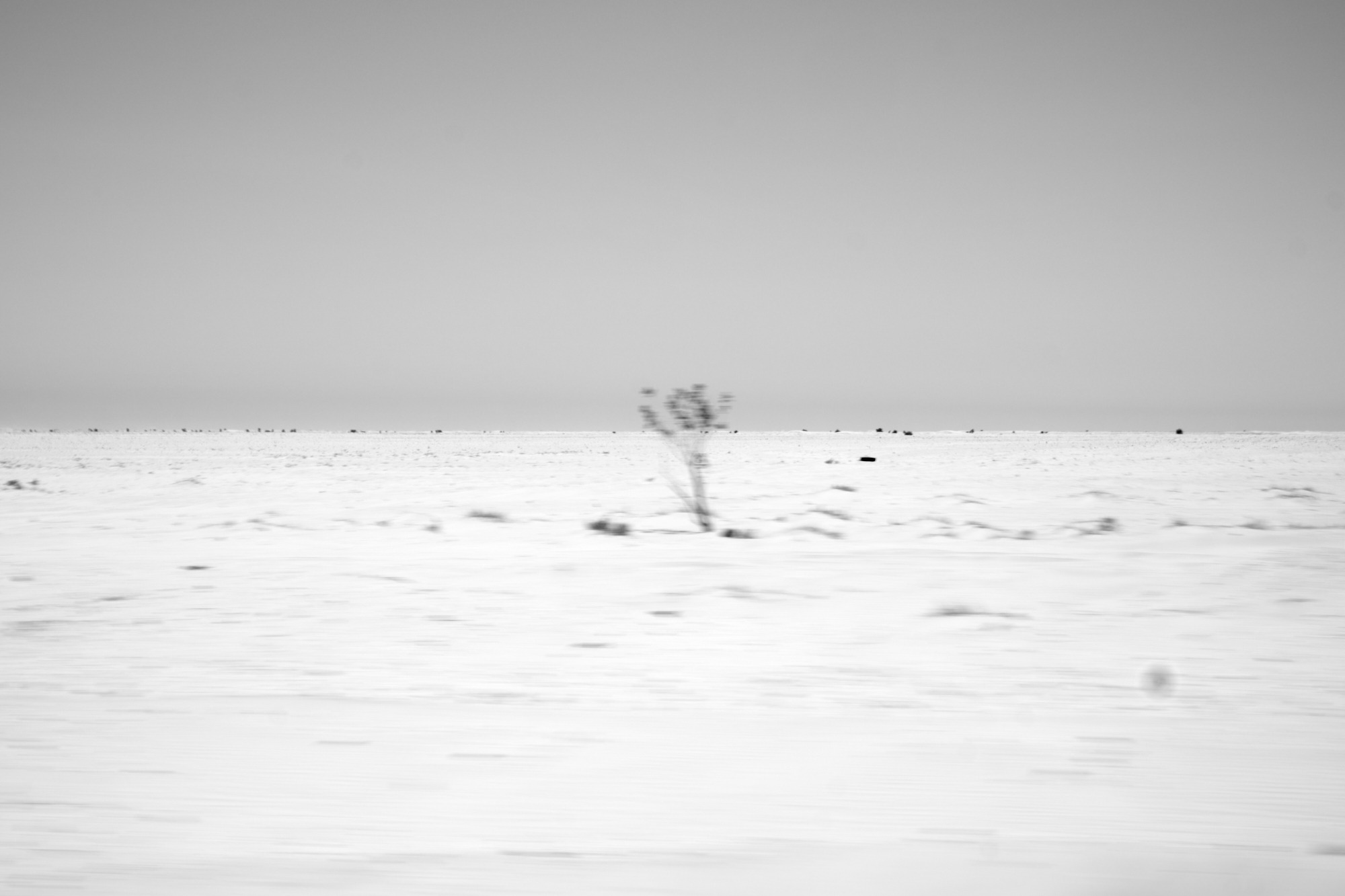
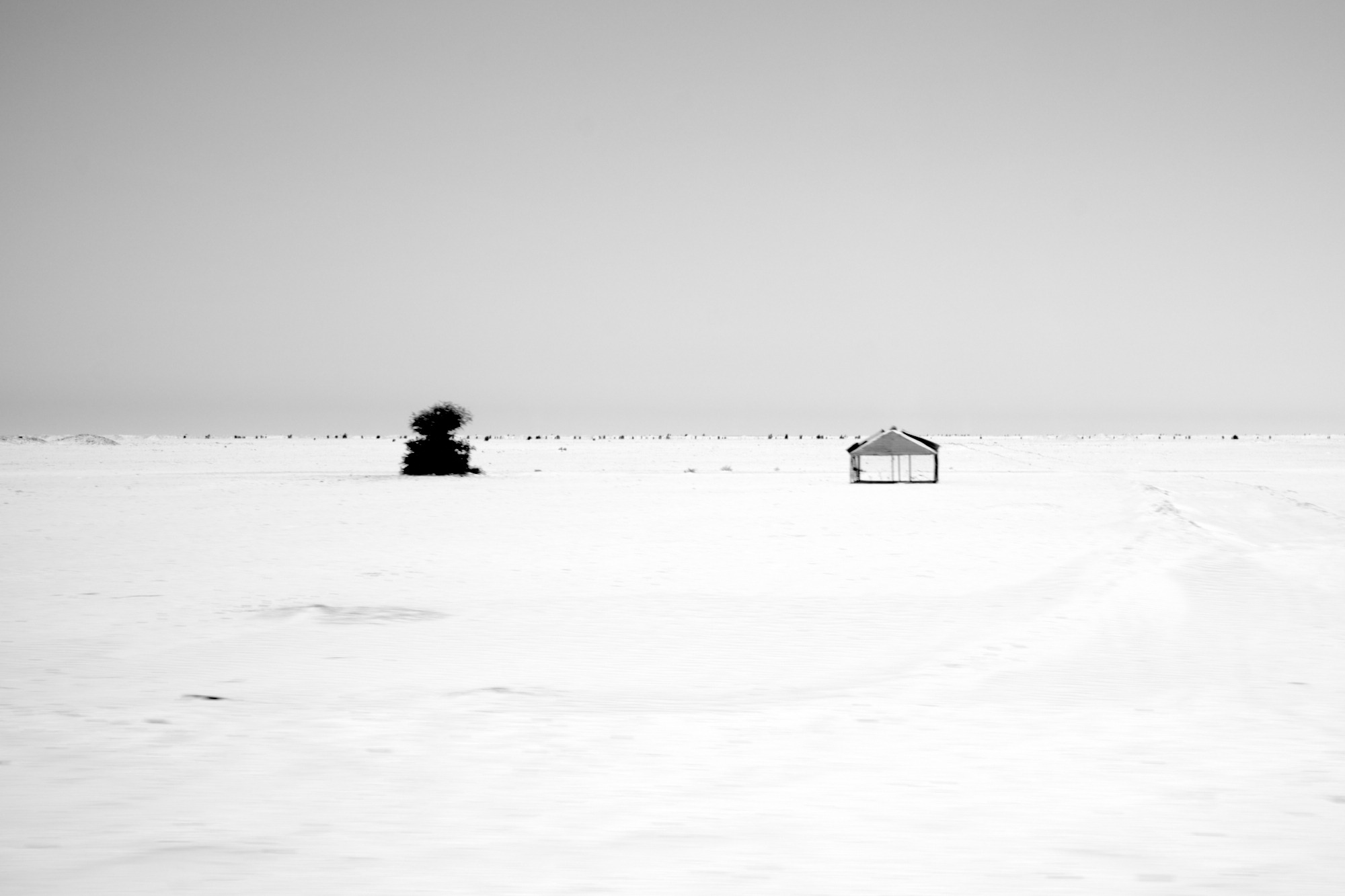
I did not want to add to the conventional Sahara pictures where the landscape looks eternal, where the Sahara looks stuck in the sand of time. The use of a slow shutter speed breaks that commonplace, that cliché. The Sahara is moving. Humankind leaves its mark, but it is humans who want to overcome the forces of nature by settling where nothing can really settle. Sahara is at its core a nomadic land. Nothing is permanent. Out there, everything just passes by.
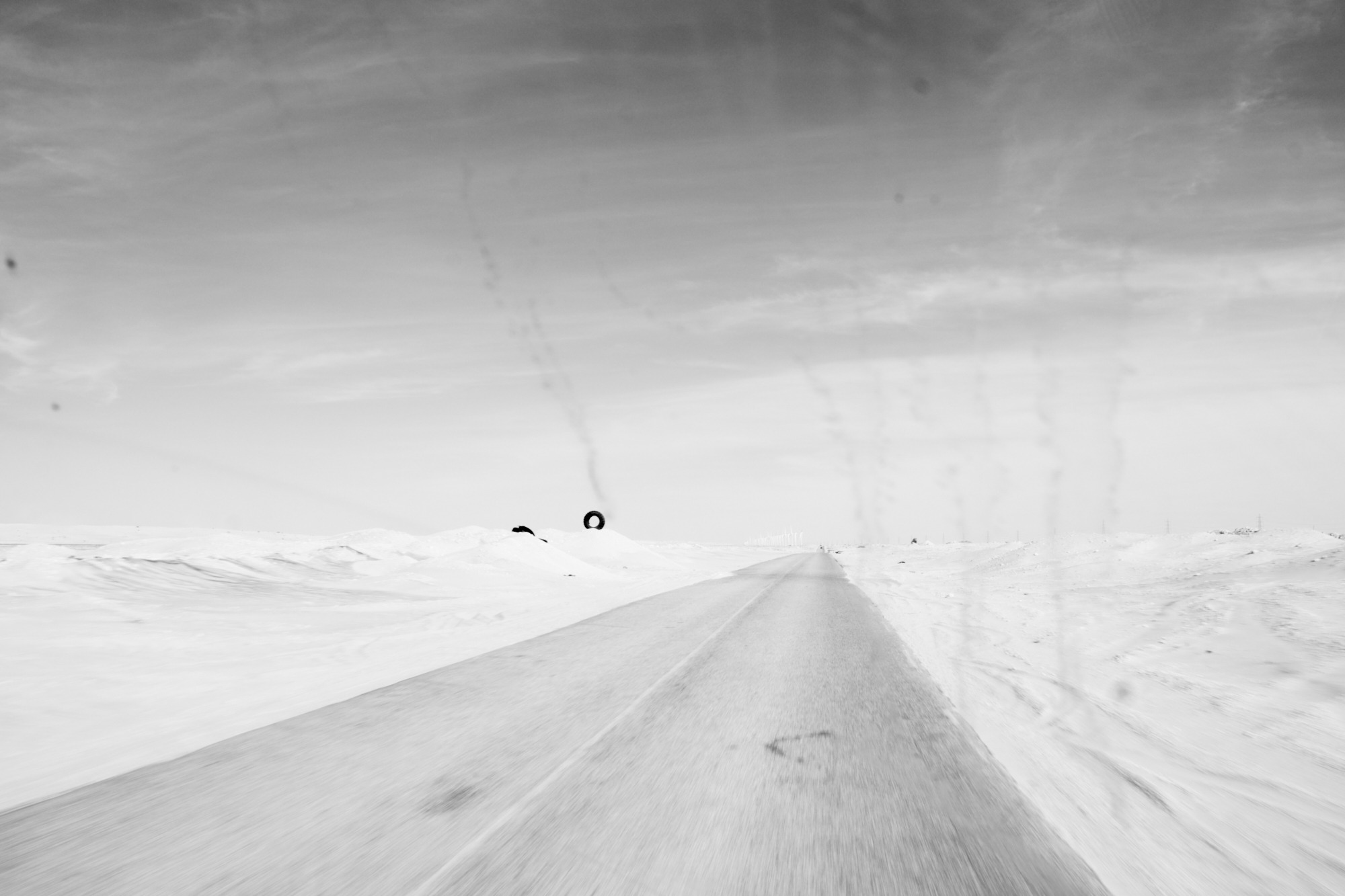
Images © Jérémie Vaudaux
Recent articles

Southern California is many things. Quite infamously, it is known as a landscape defined by the automobile, from the emergence and diffusion of the highway system to fast food burgers, and the suburbanization of the United States. Walking this place then, would seem not only inconvenient, but ill advised. In… Read more »

What is today known as ‘whistleblowing’ could once take the form of interacting with a threatening gaze carved into the city wall. It is the case of the ‘boche de Leon’ or ‘lion’s mouths’ disseminated by the old Venetian Republic throughout its territory to suppress illegal activities. Through a close… Read more »

As he navigates through the recurrent lockdowns of the pandemic, stranded between hitchiking and muggings, job hunting and separations, Fabio Valerio Tibollo rediscovers photography as a powerful coping mechanism. Recording everything that happened around him for one year straight, from attending momentous events to finding curiosity in shots of simple living,… Read more »

